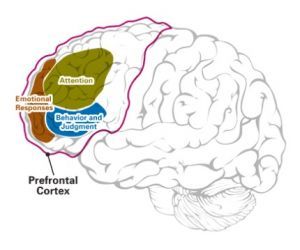ADHD
Have a Child with ADHD? Neurofeedback Is a Great Alternative
Medication is not the only way to address ADHD problems
Posted December 27, 2016
Richard was a promising young student destined for medical school when his life started to unravel. He was having such an incredibly hard time concentrating while studying for the MCAT that he talked to his doctor about it. Even though he had never had this problem before, and, despite showing no other symptoms, his doctor diagnosed him with ADHD and prescribed him Adderall, an amphetamine-based stimulant. From there the downward spiral began. The medication helped but he felt himself quickly become dependent on it. His daily dose of Adderall was doubled and soon enough he was blowing through a month’s supply in 10 to 15 days, after which he’d go through horrible withdrawals and mood swings. The mood swings got so bad that he was admitted to a psychiatric hospital. Once he was discharged, the doctor pulled him off Adderall and prescribed him a non-stimulant medication but it was too late: Richard took his own life in November of 2011.
ADHD and the problem of medication
When you hear stories like Richard’s (and it doesn't matter that these are the minority), you can see why many parents who have a child with ADHD have but one simple wish: to medicate them only if it’s absolutely necessary. The vast majority of medications used to treat ADHD are stimulants. Ritalin, Adderall, and their variants (Concerta, Vyvance, Dexedrine and more) all work primarily by increasing dopamine activity in the brain and stimulating overall function through more indirect routes. It may sound counterintuitive to increase activity in the brain of someone who seems hyperactive and fidgety but, since the source of the problem is under-activity in the prefrontal cortex, the medication gets this part of the brain to rev up its activity and do a better job of focusing, switching attention and controlling other important brain areas.

The problem is that, as with any medication, these drugs work on the whole body and brain, and not just on the specific area that needs help. This leads to many of the common side effects of these medications, including low appetite, sleep problems, irritability, depression and more. Obviously, when you have a growing and developing child, not eating and not sleeping are significant side effects due to their potential impact on development, and no one wants a depressed child.
To make matters worse, studies published in respectable journals like PLOS ONE and the American Journal of Psychiatry have found that long-term use of ADHD medication, specifically Ritalin, can result in decreased efficacy of the drug (a.k.a. tolerance) as well as worsening of ADHD symptoms. According to the studies, this was because long-term use of Ritalin resulted in changes in brain function that counteracted the drugs. Specifically, an increase in the number of dopamine transporters worked to decrease the amount of dopamine found in synapses in order to reduce the impact of the Ritalin. In order to continue getting the same relief they achieved when they initially started taking Ritalin, the subjects needed to take a larger dose, and would feel reduced effects if they maintained the same dose. And when they weren’t on the medication, the new adjustments actually made their ADHD symptoms worse!
With the number of parents who have a child with ADHD on the rise (the CDC reported a 43% increase in the number of ADHD diagnoses in the United States within the past 8 years), and the high chance that it will be misdiagnosed (a recent study conducted by the Michigan State University estimated that about 20% of children diagnosed with ADHD are actually misdiagnosed), there is a need for drug-free, non-invasive treatment. Enter Neurofeedback.
What is Neurofeedback and how does it treat a child with ADHD?
Neurofeedback is a form of neuro-therapy that directly trains brain functions to help correct abnormal brain wave patterns. It is based on our electrical brain activity, the EEG or electroencephalogram, hence also being dubbed “EEG biofeedback.” At Alternatives, neurofeedback therapy begins with a QEEG (quantitative EEG) brain scan, which shows the clinician how an individual’s brain behaves, allowing them to design a personalized training schedule. Most individuals with ADHD have brains scans that reveal a mixture of too much slow brain waves (Theta) and fast brain waves (Beta), especially in the front of the brain where the prefrontal cortex (PFC) is. Having too much slow activity means that this part of the brain is under-active, and their treatment plan typically involves training their brain to “speed-up” using a “calm-focus” frequency known as sensorimotor rhythm (SMR). The process is simple, and even fun - patients' control a video game with their mind, scoring points when the PFC speeds up. Over time, their brain learns to produce more fast brain activity in the PFC and much of the deficit melts away.

The alternative approach to ADHD
Though my main focus at IGNTD, is to help break the stigma surrounding addiction and mental health and offer alternative paths to recovery that don't require abstinence, I’ve also helped many parents who were looking for alternative ways to treat a child with ADHD. The kids themselves have spanned the entire age-range from pre-school to college. Some of the parents who have come to me had already started using medication and wanted to see if their child could flourish without it, while others have been holding off on getting any help at all for their kids because the thought of medicating them is just too much. At IGNTD, we understand that no two people develop mental health struggles in the same way which is why we advocate an individualized approach to recovery (whether you are recovering from an addiction or hoping to minimize the impact of mental health issues, like ADHD for example.) If unresolved, children with mental health issues may seek out alternative coping methods such as drinking alcohol or using drugs in adulthood, thus increasing their likelihood of developing an addiction.
If your child is struggling with ADHD or if you simply want to help them focus better, Neurofeedback is an effective alternative. Besides the positive neurophysiological effects of brain training, channeling your child’s hyperactivity into other outlets such as sports or dance is beneficial for their behavioral development as well.
References
Fusar-Poli, P., Rubia, K., Rossi, G., Sartori, G., & Balottin, U. (2012). Striatal Dopamine Transporter Alterations in ADHD: Pathophysiology or Adaptation to Psychostimulants? A Meta-Analysis. American Journal of Psychiatry, 169(3), 264-272. doi:10.1176/appi.ajp.2011.11060940
Nooner, K. B., Leaberry, K. D., Keith, J. R., & Ogle, R. L. (2016). Clinic Outcome Assessment of a Brief Course Neurofeedback for Childhood ADHD Symptoms. The Journal of Behavioral Health Services & Research. doi:10.1007/s11414-016-9511-1
Wang, G., Volkow, N. D., Wigal, T., Kollins, S. H., Newcorn, J. H., Telang, F., . . . Swanson, J. M. (2013). Long-Term Stimulant Treatment Affects Brain Dopamine Transporter Level in Patients with Attention Deficit Hyperactive Disorder. PLoS ONE, 8(5). doi:10.1371/journal.pone.0063023
Copyright 2017 Adi Jaffe
Connect with Dr. Jaffe on:
Facebook | LinkedIn | IG | IGNTDRecovery | IGNTDPodcast




